**Skagit Land Trust (SLT) hired Blue Coast Engineering to complete a site assessment and restoration feasibility study of the lower portion of the Samish Island Conservation Area in 2022-2024. The project area currently supports freshwater wetlands and sloughs, nearshore and forested habitats. Phase 1 of the project evaluated the potential to restore saltwater to the project area without negative impacts to existing infrastructure or community members. The assessment considered infrastructure, including the road and dikes, present on and adjacent to this property.
Click here to view a PDF of the Blue Coast Engineering's presentation of their research findings and conceptual restoration ideas for the isthmus to Samish Island.
Click here to read the full report from Blue Coast Engineering.
Visitors may encounter staff and subcontractors conducting assessment work on site, or see their monitoring equipment on site. Thank you for leaving any items you may observe in place and not disrupting on site research.**
Property Description
The Samish Island Conservation Area is made up of the end of the isthmus that connects Samish Island, and the forested “coming home” view for islanders and visitors. The 100+ year-old forest that encompasses both sides of Samish Island Road, provides nesting, roosting, perching, and foraging habitat for a variety of raptors such as the Bald Eagle, Osprey, Cooper’s Hawk, and owls, as well as migratory song birds. It is used as a staging and feeding area for herons that nest nearby. The property also features 1,600 feet of natural shoreline on Padilla and Samish Bays.
edit.jpg)
Pictured above: The natural shoreline provides nesting and foraging habitat for a variety of species.
Conservation Story
The creation of the Samish Island Conservation Area is a testament to the community’s love and support for this unique property. Over the course of four years The Trust was able to purchase 34.25 acres of the forested uplnads known as the Samish Flower Farm, and then 50 acres at the entrance to Samish Island.
More than 500 families, businesses, and organizations donated towards the purchase of these properties. The Conservation Fund provided the Trust a partial bridge loan while the Trust awaited grant funds from the National Coastal Wetlands grant program and Washington State's Estuary & Salmon Restoration Program. Without conservation ownership, the property could have been cleared and subdivided into numerous smaller lots. The purchase of these 84.25 acres ensures that the land will remain forever undeveloped.
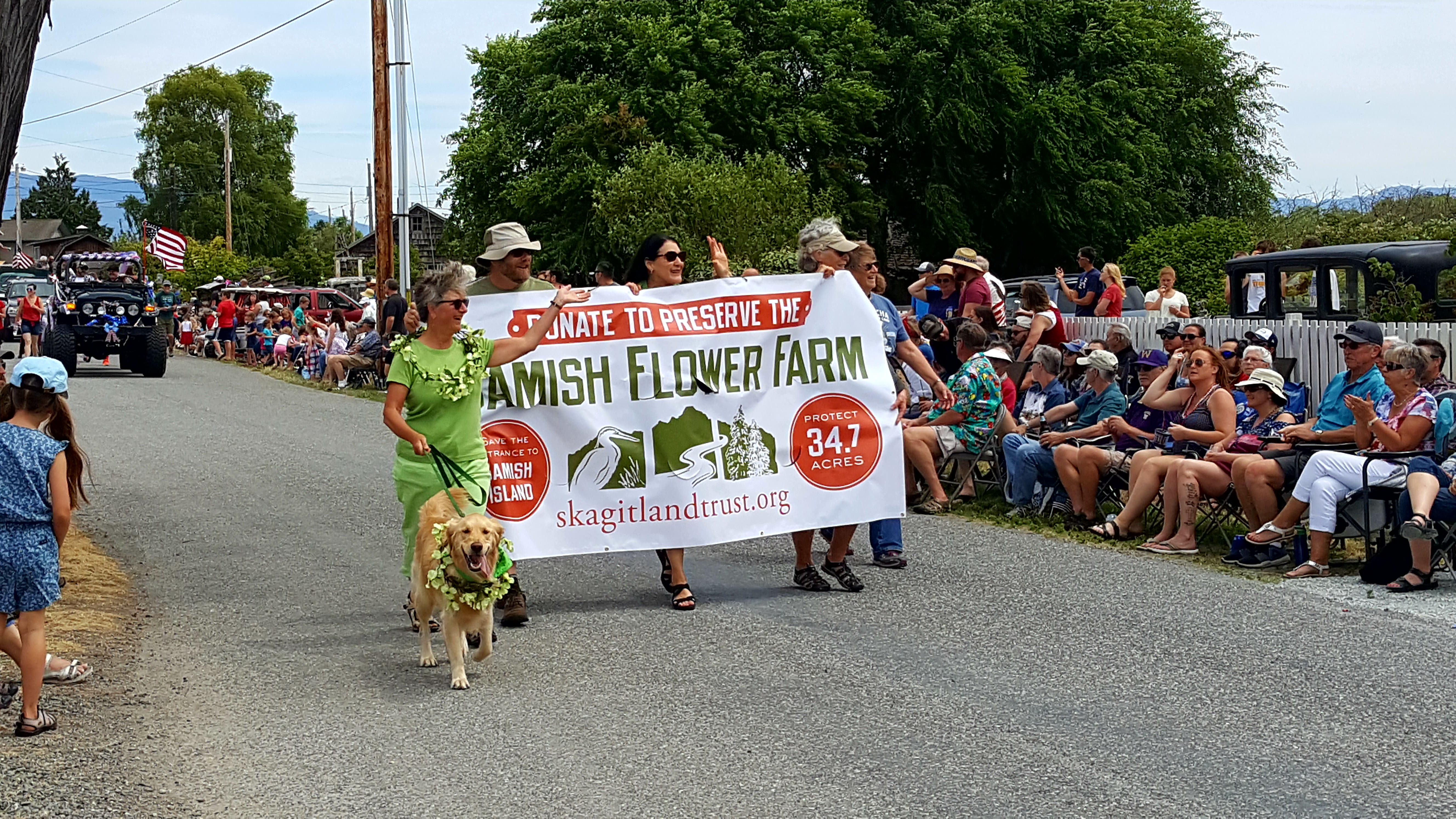
Pictured above: Community members promoting the campaign during the annual 4th of July parade. The Samish Island community worked together to raise funds to purchase and preserve the Samish Flower Farm.
Video on the Samish Flower Farm project.
Ecology
The Samish Island Conservation Area has ecological qualities that are increasingly rare in Puget Sound. The conservation area protects wetlands and freshwater emergent wetlands, a large sand and gravel beach adjacent to Padilla Bay tidelands, and over 24 acres of complex mature forest (130 years+ trees).
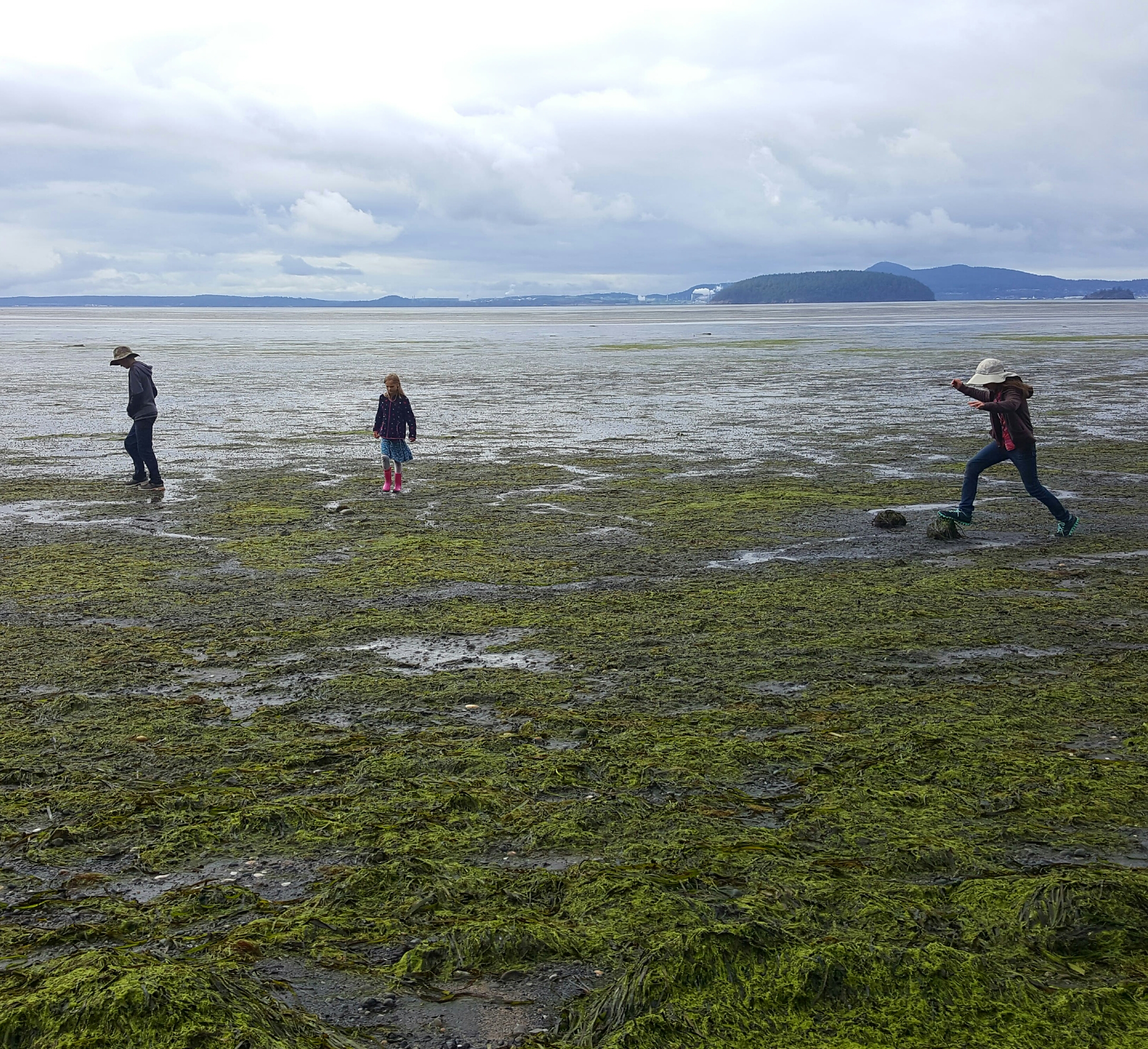
Pictured above: Eelgrass beds just off the shore.
The marine shoreline along the Samish Island Conservation Area is part of Padilla Bay, which hosts the second largest eelgrass meadows in the western United States. These meadows provide a number of important ecosystem functions, including foraging areas and shelter to young fish and invertebrates, food for migratory birds and spawning surfaces. Herring, crab, and juvenile Chinook salmon rely on these eelgrass beds. In turn, resident Orca Whales rely on the Chinook for a substantial part of their diet.
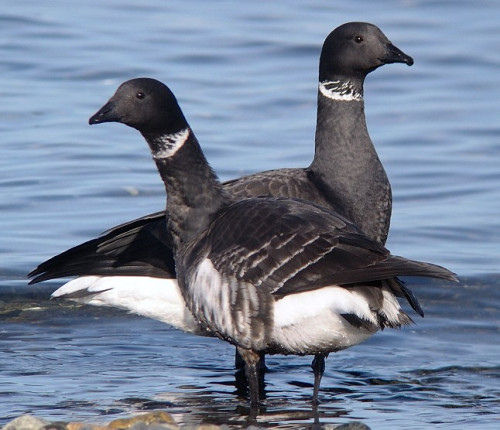
Pictured above: Brant Geese
This area is considered a birding hotspot, with 220 species identified on Samish Island. One of the largest concentrations of waterfowl and dabbling ducks in the Pacific NW use Padilla Bay during fall and spring migrations. The maturing forest and intertidal areas of the Samish Island Conservation Area are a haven for owls, raptors and numerous shorebirds. Thousands of Brant can be seen just offshore, including the gray-bellied (High Artic) Brant, one of the rarest geese, yet common in these waters.
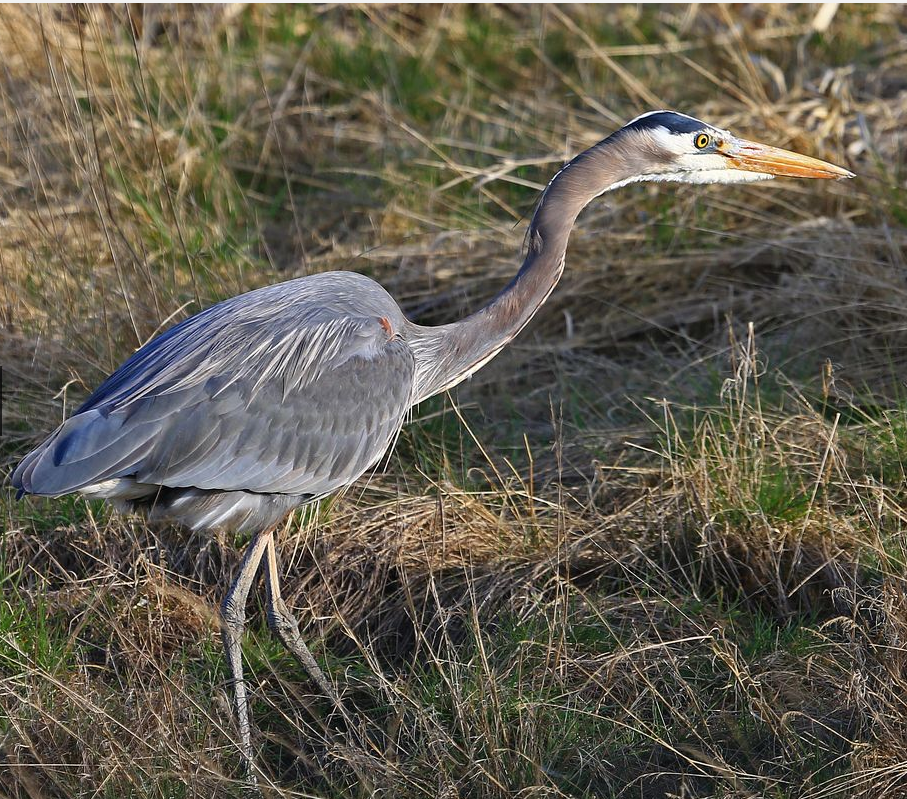
Pictured above: A Great Blue Heron. Photo courtesy of Ron Holmes
The Samish Island Conservtion Area is also adjacent to the Trust’s Samish Island Great Blue Heron colony, which was established in the 1930s. While the rookery became abandoned in 2017, herons can return to former nesting sites even after many years, and herons still use this area for foraging and roosting. By protecting this property, we ensure that additional nesting trees are available to the herons as well as ensuring a protected buffer area to prevent disturbances.
Access
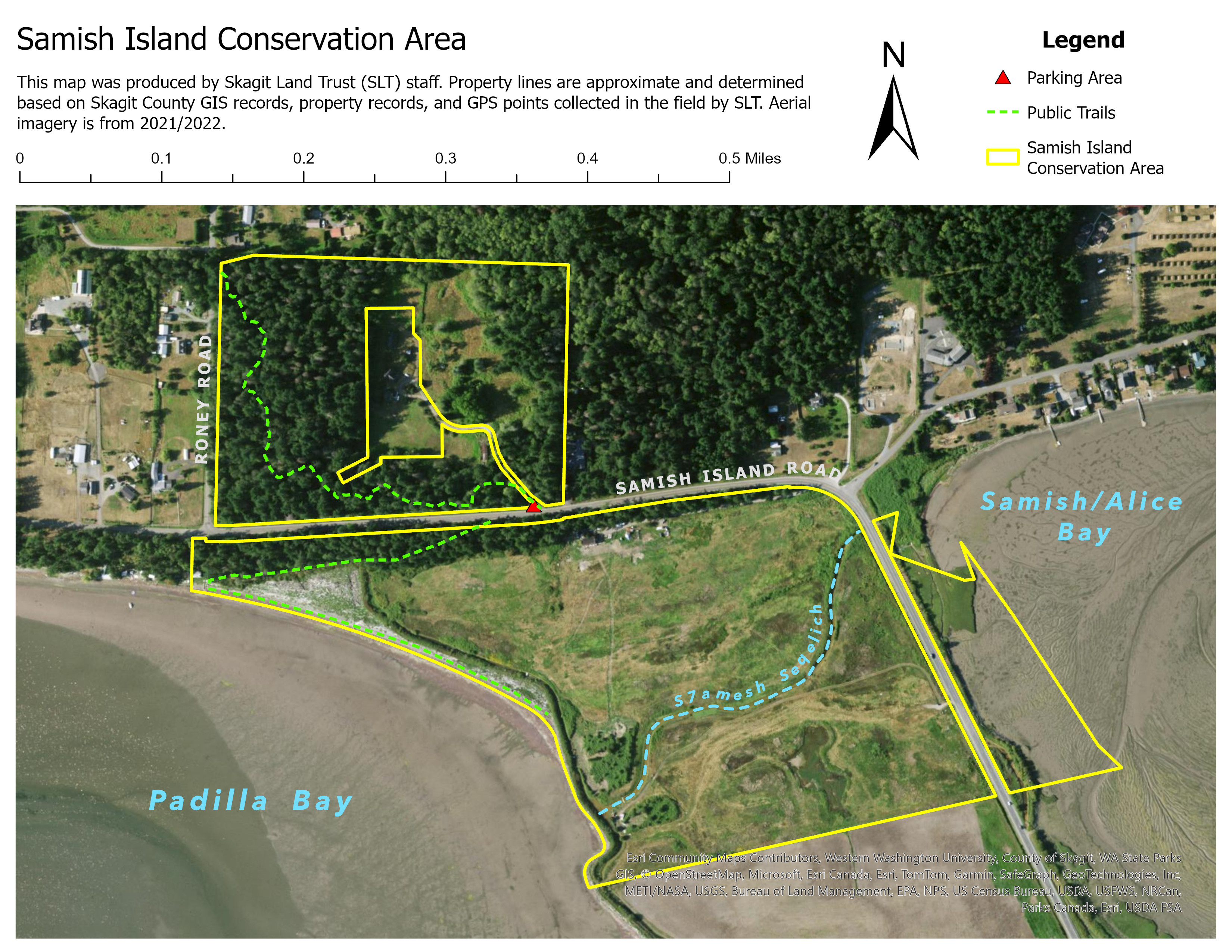
Click here for a link to Google maps for the Samish Island Conservation Area.
Beach access is located on the waterside of Samish Island Road, .2 miles west of the Island welcome sign.